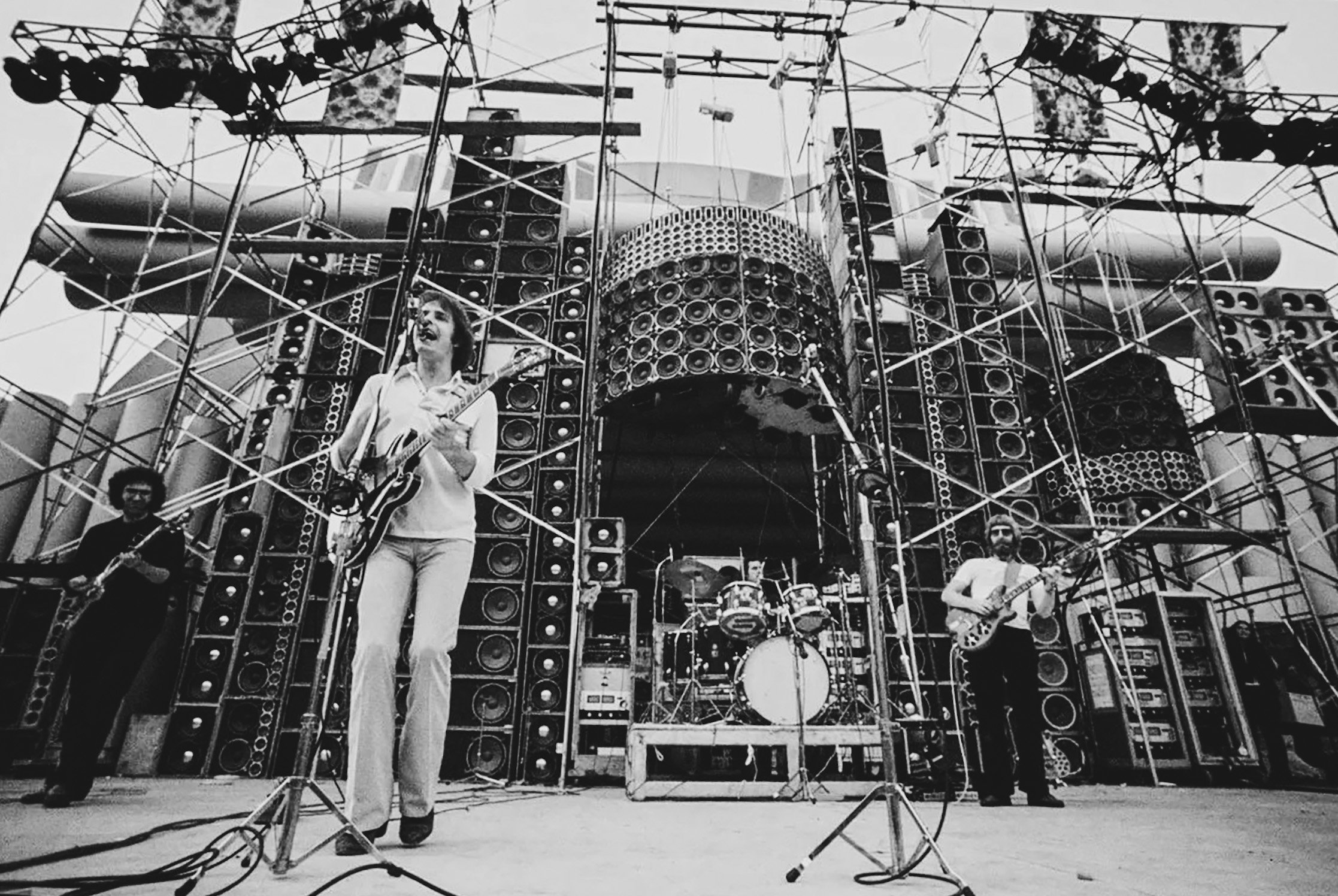

McIntosh and the Grateful Dead’s Wall of Sound
The Evolution of Concert Sound Systems
Concert sound systems have transformed remarkably since the 1960s, evolving from rudimentary setups for small venues to complex configurations capable of delivering powerful, immersive experiences in arenas hosting tens of thousands of fans. As concerts grew in scale, so did the challenges. Musicians struggled to hear themselves on stage, while audiences in distant seats grappled with poor sound quality. These limitations even contributed to The Beatles' decision to temporarily halt touring, citing the technological constraints of the time.
During this pivotal era, the Grateful Dead emerged as pioneers of a new musical style and as innovators in concert sound technology.
Addressing the Need for Superior Live Performance Equipment
The Grateful Dead, emblematic of the Classic Rock era, captivated audiences with their psychedelic sound and electrifying energy. However, as their performances shifted to larger venues, they faced the inherent challenges of existing sound systems: muddled acoustics and interference from stage reflections.
This prompted the band's sound engineer, Owsley Stanley—known affectionately as “Bear”—to develop a groundbreaking solution. On March 23, 1974, the Grateful Dead unveiled the "Wall of Sound" at the Cow Palace in San Francisco. This custom-built sound system redefined live audio engineering and set a new benchmark for concert sound quality.
The Grateful Dead’s Wall of Sound and the Role of McIntosh Amplifiers
The Wall of Sound featured an extraordinary setup: over 600 speakers arranged on a colossal wall behind the stage. Central to its success were 48 McIntosh MC2300 amplifiers, delivering a combined output of 28,800 watts. This immense power ensured unparalleled sound clarity and fidelity across even the largest venues.
The system’s innovative design included six independent sound systems with eleven channels. Each string of Phil Lesh’s bass guitar was assigned its dedicated channel and speaker, offering unprecedented sonic precision.
Another key innovation was the two-microphone system, designed to mitigate feedback. The setup used one microphone for vocal input and another to cancel ambient noise, significantly enhancing vocal clarity.
The McIntosh amplifiers were indispensable to the Wall of Sound’s success. Renowned for their robust power output, exceptional sound detail, and dynamic range, they enabled the band to replicate their intricate and improvisational performances with remarkable authenticity.

Logistical Challenges and the Wall of Sound's Legacy
Despite its revolutionary design, the Wall of Sound presented significant logistical challenges. The system required four semi-trailers for transport, a team of 21 crew members for assembly and disassembly, and four hours to set up at each venue. These complexities ultimately led to its retirement after just six months of use.
However, the Wall of Sound’s impact on live music was profound. Standing three stories tall and weighing 75 tons, it symbolised the Grateful Dead’s unwavering dedication to delivering the highest quality sound to their audiences.
After the Wall of Sound was retired, individual components, including McIntosh MC2300 amplifiers, continued to be used by band members during live performances. In 2021, Jerry Garcia’s "Budman" McIntosh MC2300 amplifier fetched $378,000 at a Sotheby’s auction, underscoring the enduring legacy of this iconic sound system.
A Lasting Revolution in Live Audio
The Wall of Sound may have played its final concert in October 1974, but its influence continues to resonate in modern audio engineering. It set the stage for innovations that define today’s large-scale music venues, leaving an indelible mark on the history of live performance.
For further insights, explore the Grateful Dead's Wall of Sound through the podcast For the Love of Music. In a featured episode, former Grateful Dead sound crew member Janet Furman shares captivating stories about working with Owsley Stanley, recording the band’s most iconic tracks, and even commandeering a helicopter to salvage a massive rock festival—with McIntosh amplifiers at the heart of it all.








